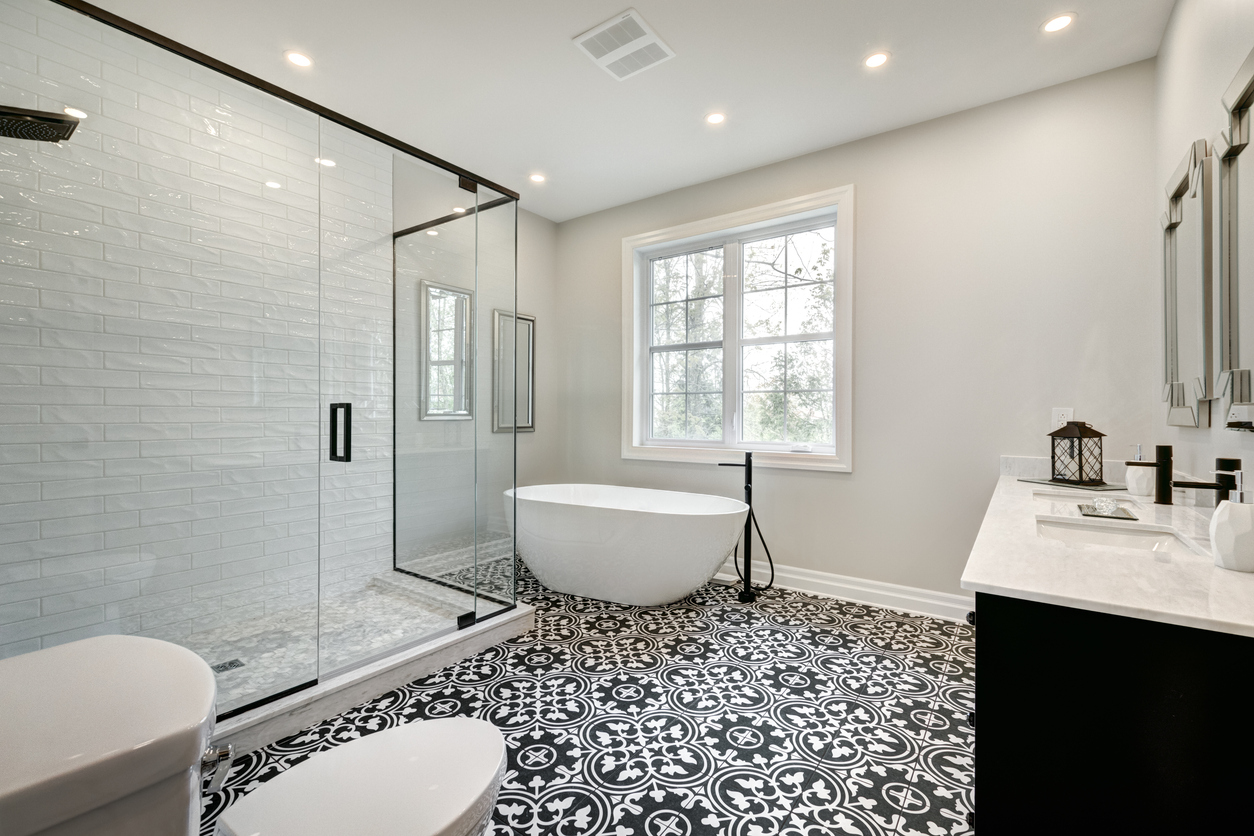Bathroom Floor Fall and Shower Slopes: Why They’re Important in Bathrooms
A bathroom’s design often requires meticulous attention to detail. While choosing tiles and fixtures can be exciting, it’s essential to consider small details like bathroom floor fall and shower slopes. These crucial elements improve the safety and functionality of your bathroom.
What is a bathroom flooring fall?
Bathroom flooring falls are the designed slopes on the surface of a bathroom floor. This feature guides the water to the floor or shower drain, preventing it from pooling around the entire floor. Floor falls reduce the risk of water damage as well as slips and falls.
What is a shower slope?
A shower slope is the slope of the floor in the shower area. Similar to bathroom flooring falls, the purpose is to direct water flow to the shower drain for efficient drainage and deter it from building around the shower floor and seeping into other areas of the bathroom.
The importance of bathroom flooring falls and shower slopes
Bathroom flooring and shower slopes are important for several reasons:
- Proper drainage: Good slopes and flooring falls help moisture and water to travel to the floor and shower drain better, preventing water damage.
- Improved safety: An inadequately sloped bathroom and shower area can increase the likelihood of falls, particularly for older adults and those with mobility issues. Improper slopes can lead to standing water, increasing the risk of slips and falls.
- Enhanced aesthetics: Bathroom falls and shower slopes are not only functional but also visually pleasing. When the water is efficiently drained, you can guarantee that your bathroom will look cleaner and more appealing.
- More hygienic: Standing water and moisture can also create hazardous conditions by increasing the likelihood of mould and mildew growth, leading to respiratory issues, particularly among those with allergies or other health problems.
It’s vital to consider these variables when constructing or renovating your bathroom and shower. So, take the time to invest in a well-designed bathroom that prioritises proper slopes for a safer, healthier home.
Related read: How to waterproof a bathroom
How to create a fall on a bathroom floor
Creating a fall on a bathroom floor is important to ensure proper drainage and prevent water from pooling on the floor. Here’s a step-by-step guide on how to create a fall on a bathroom floor:
Materials you will need:
- Self-levelling compound
- Trowel
- Chalk line
- Spirit level
- Measuring tape
- Utility knife
- Safety glasses
Instructions:
- Clear the bathroom floor of any debris, dirt, or dust. Make sure the surface is clean and free of any obstructions.
- Check the existing floor for levelness using a spirit level. Mark any areas that are not level with a chalk line.
- Measure the height difference between the bathroom floor’s lowest and highest points of the bathroom floor.
- Determine the desired slope or fall of the bathroom floor and shower screed thickness. The recommended slope is at least 1/4 inch per foot of the bathroom floor.
- Mix the self-levelling compound according to the manufacturer’s instructions. Use a trowel to mix the compound until it is a smooth, even consistency.
- Pour the self-levelling compound onto the lowest point of the bathroom floor. Use a trowel to spread the compound evenly over the floor’s surface, working from the lowest point towards the highest point.
- Smooth the compound with the trowel, ensuring it is level and even. Work quickly, as the compound will begin to harden within 20 minutes.
- Allow the self-levelling compound to dry for at least 24 hours or as the manufacturer recommends.
- Use a utility knife to trim any excess self-levelling compound from the edges of the bathroom floor.
- Check the slope of the bathroom floor using a spirit level. Make any necessary adjustments before the compound has completely dried.
- Once the self-levelling compound has completely dried, install the bathroom tiles or other flooring material over the top of the compound, per the manufacturer’s instructions.
Following these steps will ensure that you create a fall on your bathroom floor, providing proper drainage and preventing water from pooling on the floor.
Summing it up
Falls and slopes in your bathroom and shower flooring create a safer, more efficient and aesthetically pleasing bathroom space. These design elements significantly contribute to the cleanliness and longevity of your wet room, so it’s vital to keep them on top of mind if you’re planning for a bathroom renovation. Incorporate these features for a functional bathroom for years to come!
